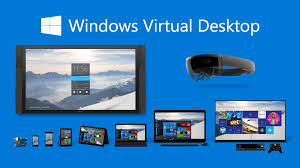Holographic cards have become a popular choice for special occasions, promotions, and branding due to their captivating, multi-dimensional appeal. These cards not only look extraordinary but also offer a modern and sophisticated touch that stands out in any setting. Whether you’re designing a business card, a greeting card, or a promotional piece, incorporating holographic elements can make a huge impact.
In this article, we’ll cover 10 essential tips for designing stunning holographic cards that catch the eye and leave a lasting impression on your audience.
1. Understand the Power of Holography
Before diving into the design process, it’s important to understand what makes custom holographic cards unique. Holography creates an illusion of three-dimensional depth and movement by manipulating light. This dynamic feature makes them stand out, especially in marketing materials or high-end stationery.
By knowing how holographic designs work, you can ensure that your cards take full advantage of this technology. Holographic cards can be used to highlight certain parts of the design or create a unique visual effect that enhances the overall aesthetic.
2. Choose the Right Holographic Effect
There are several types of holographic effects you can apply to your cards. Understanding the difference between them is key to choosing the right one for your design.
- Rainbow Holographic: This effect features an array of colors that shift and change with the light, giving your card a vibrant, eye-catching look.
- Laser Holographic: A more defined, structured effect that displays geometric patterns and intricate designs, perfect for modern and sleek designs.
- 3D Holographic: This type of holography gives the illusion of depth, often used for larger design elements or logos to create a more dramatic effect.
- Spot Holography: This focuses on small, targeted areas of the card, ideal for highlighting logos, images, or important text.
Choose the effect that aligns with your brand or the occasion for which you’re designing the card.
3. Keep Your Design Simple and Focused
While holographic cards are visually striking, it’s important to maintain a balance between the holographic elements and the design itself. Overcrowding the card with too many details can make it feel cluttered. Instead, focus on a clean, minimalist design with strategic placements of holographic features.
For example, you might use holographic accents to highlight your logo, important text, or design motifs. This draws attention to these key areas without overwhelming the viewer.
4. Select High-Quality Materials
The quality of the material you choose for your holographic card plays a significant role in how your design is perceived. A flimsy or low-quality card might not do justice to the holographic effects.
Opt for premium cardstock with a smooth finish to ensure that the holographic elements stand out. Additionally, the card should be durable enough to handle the special coating process involved in creating holographic designs. Thicker, high-quality materials will give your card a more luxurious feel and enhance its overall visual impact.
5. Use Bold Colors That Complement Holography
Colors play a crucial role in any card design, but with holographic cards, the right color choices can take the design to a whole new level. Bold, rich colors, like deep blues, purples, and golds, often work well with holographic effects. These colors allow the holographic element to shine and shift under different lighting conditions.
It’s also important to consider contrast. For example, a dark background with bright holographic text or design elements will help the holography stand out more dramatically. Ensure that the colors complement the holographic effects and don’t compete with them.
6. Experiment with Layering Effects
One way to make your holographic card even more stunning is by layering different design elements. Combining holographic finishes with embossed or spot UV printing can create a multi-dimensional effect that adds texture and visual interest.
For example, you could use embossing to raise certain design elements, and then add a holographic finish to other areas of the card for a striking contrast. This layering approach creates a sense of depth and sophistication that enhances the holographic effect.
7. Integrate Typography Carefully
When designing holographic cards, pay special attention to your typography. The text on your card should not be overshadowed by the holographic elements. Make sure the font you choose is legible and works well with the overall design.
- Contrast: Use contrasting colors for text to ensure it stands out against the holographic background.
- Simple Fonts: Opt for clean, simple fonts that don’t get lost in the holographic shimmer. Avoid overly decorative or intricate fonts that could become difficult to read.
- Strategic Placement: Position your text in areas where it complements the holographic effect without competing for attention. A good rule of thumb is to place important text in areas where the holographic effect is less dominant.
8. Optimize the Card for Multiple Uses
Consider the purpose of the holographic card and how it will be used. A business card, for example, may need to fit easily into a wallet, while a greeting card might have a larger format. Think about how the card will be handled, stored, and displayed by the recipient.
- Business Cards: Ensure that your design works well on a small scale and that your holographic elements don’t get lost in the reduced size.
- Greeting Cards: With larger cards, you have more room to experiment with full-coverage holographic designs and more elaborate patterns.
No matter the format, make sure the design is practical and functions well in its intended setting.
9. Focus on the Finishing Touches
The final touches can make a world of difference in elevating your holographic card design. Consider the following options to make your card feel even more special:
- Foil Stamping: In addition to holographic effects, foil stamping can add metallic shine and texture to certain areas of the card.
- Die-Cutting: Custom die-cut shapes can enhance the card’s appeal and make it stand out even more.
- Varnishing: A matte or gloss varnish can be applied to parts of the card to create a striking contrast with the holographic effects.
These finishing techniques add depth and texture to the card, creating a tactile experience that complements the visual appeal.
10. Test Your Design with Prototypes
Before printing a large batch of holographic cards, it’s essential to create prototypes and test your design. Prototypes allow you to see how the holographic effects appear in real life and whether the colors and design choices work well together. This is especially important since holographic effects can look different depending on lighting and angles.
Request a sample from your printing company and carefully inspect it. Look for any areas where the holographic effect may be too faint or overpowering, and make adjustments accordingly.
Conclusion
Designing stunning holographic cards is an exciting and creative process that can significantly elevate the impact of your brand, event, or promotional material. By following these 10 tips, you can ensure that your design not only takes full advantage of holographic effects but also looks professional and polished.
Remember, the key to a stunning holographic card is balance—strategically combining design, color, typography, and finishing techniques will allow your card to stand out while maintaining its elegance and legibility. With the right approach, your custom packaging products will leave a lasting impression on anyone who receives them.



